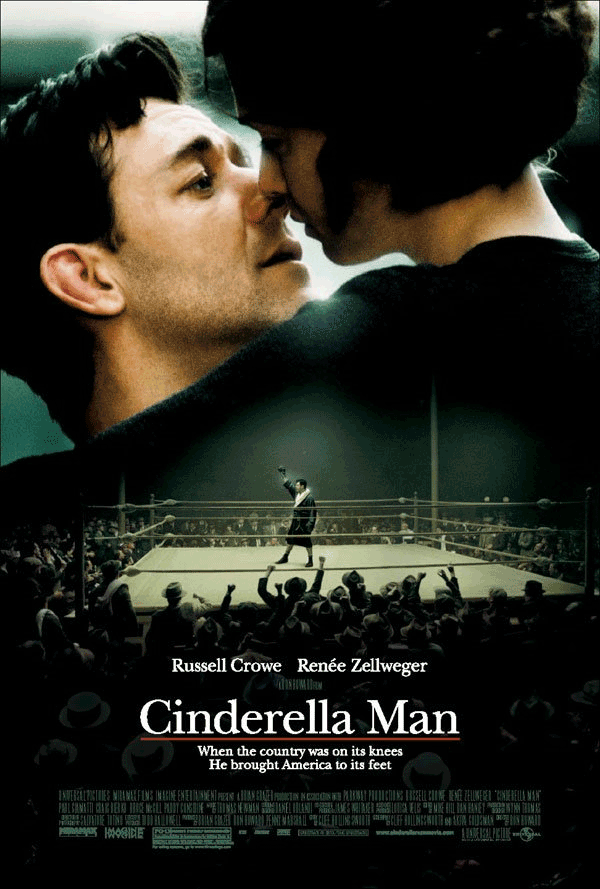
This web page is part of the Michigan Today Archive. To see this story in its original context, click here.
July 2005
Talking About the Movies: Ron Howard—Emerging AuteurBy Frank Beaver
There are film directors who over the course of their careers attain a distinction called "auteurship." It's a status earned when a director's films have carried forward recognizable thematic, stylistic and cinematic traits, signaling a visionary artist who has left a signature stamp on each film effort, i.e., becoming the film's "author." Alfred Hitchcock was the unquestionable auteur among mystery directors, John Ford among western directors and Frank Capra among directors with populist visions for America.
Beginning with Backdraft (1991) Howard showed an interest in telling stories—often inspired by real-life people—that revealed unusual male heroism. In a script developed by ex-firefighter Gregory Widen, Backdraft dramatized the lives of people engaged in the dangerous, stressful profession of battling fires. The film's superb visual effects dramatically amplified the risks taken by Backdraft's heroes. Similar qualities appeared in Howard's Apollo 13 (1995), a film about NASA's 1970 space mission that nearly ended in catastrophe for Jim Lovell and his crew. Again it was a tale of male heroism in which brilliant on-screen visual effects underscored the tense drama. The next year, in Ransom, a story about a combative tycoon who single-handedly takes on a gang of ransom-kidnappers, Howard impressed filmgoers and critics with a talent for imbuing the male protagonist with a dimensioned, psychological underside. Then in 2001 Howard hit full stride with A Beautiful Mind. This film's hero was the renowned Princeton mathematician John Forbes Nash (Russell Crowe), a man whose genius and promise took a dark downturn through debilitating bouts of schizophrenia. Howard's growing aptitude for creating complex characters resulted in a film that even in its darkest moments sustained an ennobling tone. And again Howard drew on dynamic visual effects to help articulate the film's complicated story. Using a cinematic device best described as "photographed thought," Howard powerfully conceptualized the delusional wanderings of John Nash's mind. These screen visualizations appeared at first glance to be part of the narrative action, but in time were recognized as the products of mental distortion and hallucination. A Beautiful Mind won acclaim for its incisive probing of schizophrenia, and it won over filmgoers and Academy Awards voters with its inspiring story of mental breakdown and recovery. Now in Cinderella Man Howard again reaffirms those qualities that are making him a distinctive filmmaker. This is yet another inspiring tale of a good, decent man brought low, but who bounces back against the greatest of odds. The hero is Jim Braddock, a Depression-era boxer whose remarkable comeback earned him the label "Cinderella Man." After Braddock's ring career falters because of physical injuries, his family is plunged into dire poverty that for the boxer signals both professional and personal defeat. Braddock sinks into a dark, brooding state of existence. As he did so brilliantly with Russell Crowe as John Nash in A Beautiful Mind, Howard again leads Crowe to portray an introspective, complicated character, and again it is Crowe's performance that helps imbue Howard's film with an aura of nobility. When Braddock returns to the boxing ring, Ron Howard's mastery of visual dynamics is once more on full display. The camera coverage of the boxing bouts is unparalleled in its immediacy and intensity. During Braddock's big fight against heavyweight champion Max Baer, "photographed thought" is again employed as a key dramatic element, as Howard interposes snippets of memory to convey the motivation that sustains Braddock during the fight. And Cinderella Man climaxes with an emotionally charged uplift like that experienced at the conclusion of A Beautiful Mind. Each new Ron Howard film suggests that this director knows how to entertain and inspire with his screen heroes who have been lifted from real life, and that talent is so far the source of his emerging auteurship.
|
|
Michigan Today News-e is a monthly electronic publication for alumni and friends. |
| MToday NewsE | |
|
|
Michigan Today
online alumni magazine
University Record
faculty & staff newspaper
MGoBlue
athletics
News Service
U-M news
Photo Services
U-M photography
University of Michigan
gateway

 The latest film by Ron Howard, Cinderella Man, is by far this summer's most heartwarming, engaging screen entertainment, and yet another step by Howard toward filmic achievement that portends auteur status.
The latest film by Ron Howard, Cinderella Man, is by far this summer's most heartwarming, engaging screen entertainment, and yet another step by Howard toward filmic achievement that portends auteur status.
